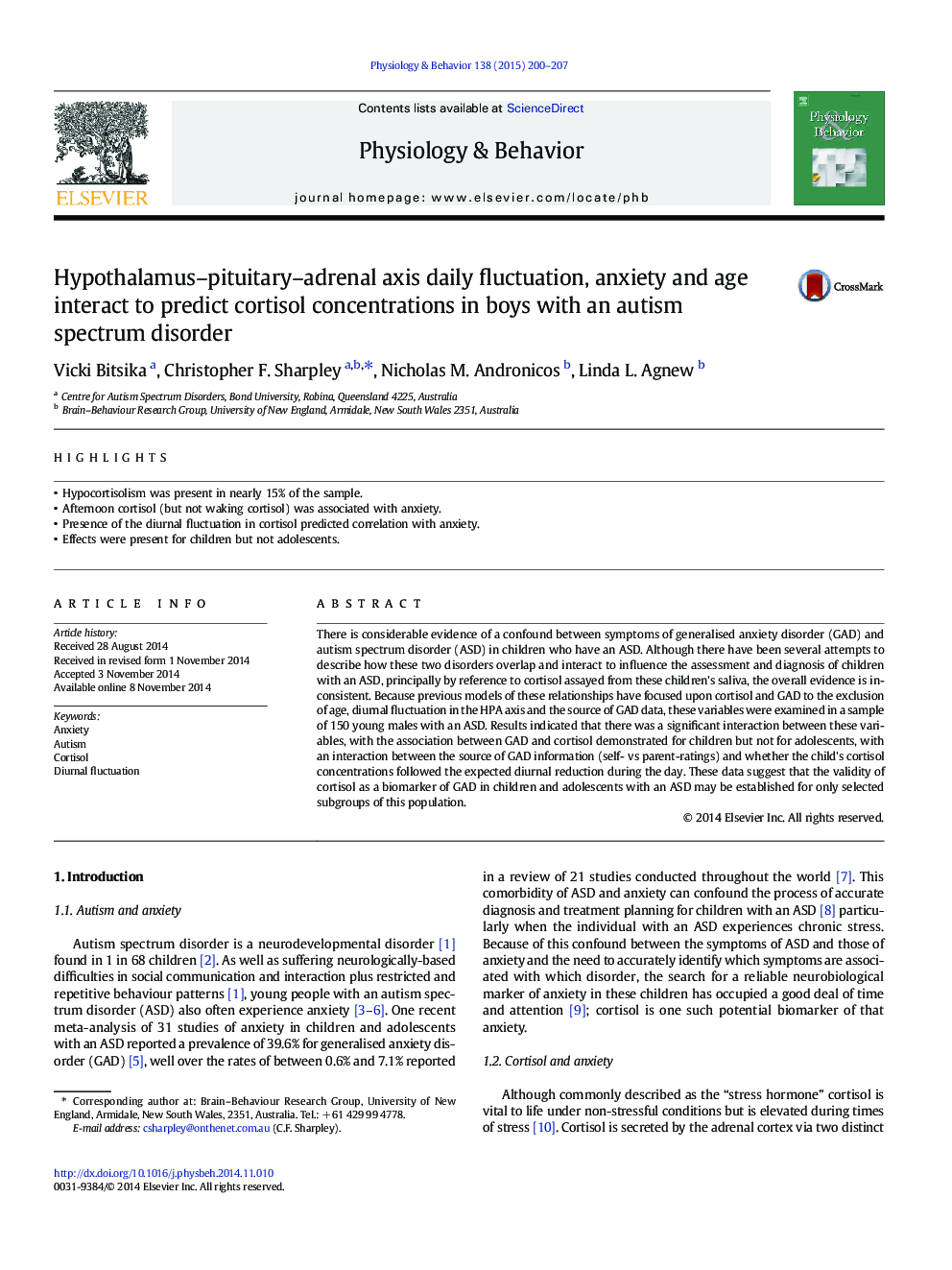| Article ID | Journal | Published Year | Pages | File Type |
|---|---|---|---|---|
| 2844212 | Physiology & Behavior | 2015 | 8 Pages |
•Hypocortisolism was present in nearly 15% of the sample.•Afternoon cortisol (but not waking cortisol) was associated with anxiety.•Presence of the diurnal fluctuation in cortisol predicted correlation with anxiety.•Effects were present for children but not adolescents.
There is considerable evidence of a confound between symptoms of generalised anxiety disorder (GAD) and autism spectrum disorder (ASD) in children who have an ASD. Although there have been several attempts to describe how these two disorders overlap and interact to influence the assessment and diagnosis of children with an ASD, principally by reference to cortisol assayed from these children's saliva, the overall evidence is inconsistent. Because previous models of these relationships have focused upon cortisol and GAD to the exclusion of age, diurnal fluctuation in the HPA axis and the source of GAD data, these variables were examined in a sample of 150 young males with an ASD. Results indicated that there was a significant interaction between these variables, with the association between GAD and cortisol demonstrated for children but not for adolescents, with an interaction between the source of GAD information (self- vs parent-ratings) and whether the child's cortisol concentrations followed the expected diurnal reduction during the day. These data suggest that the validity of cortisol as a biomarker of GAD in children and adolescents with an ASD may be established for only selected subgroups of this population.
